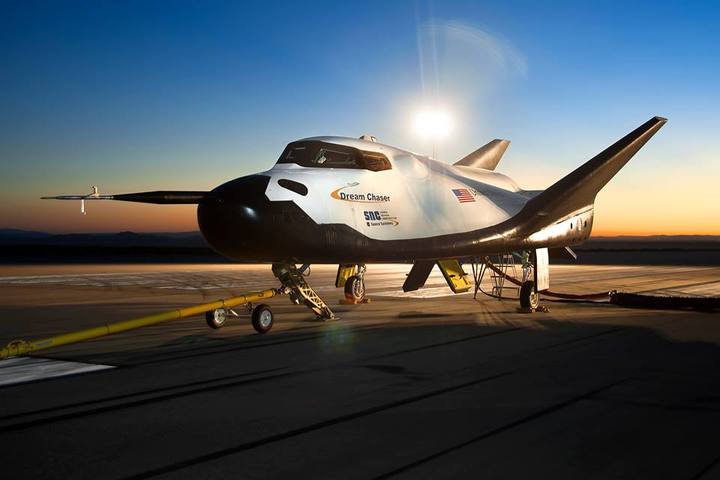Sierra Nevada Completes ‘Incremental’ Critical Design Review of Dream Chaser Spacecraft
http://www.spacenews.com/article/civ...eview-of-dream
Sierra Nevada Space Systems completed what it characterized as an “incremental” critical design review covering elements of the seven-passenger, shuttle-like Dream Chaser spacecraft it is developing under NASA’s Commercial Crew Program, the Louisville, Colo., company said Jan. 30.

Dream Chaser prototype during tow testing at Edwards Air Force Base, Calif.
The work is part of the $227.5 million Commercial Crew Integrated Capability (CCiCap) Space Act Agreement Sierra Nevada got from NASA in 2012. The deal was the smallest of three CCiCap awards NASA handed out at the time, with the others going to Boeing Space Exploration of Houston and Space Exploration Technologies Corp. of Hawthorne, Calif.
CCiCap, the third round of contracts awarded under the Commercial Crew Program, runs through May. NASA hopes the effort will produce at least one commercially designed and operated spacecraft to replace the retired space shuttle’s crew-carrying capability by 2017.
In government space projects, the critical design review typically is the final step before hardware construction begins. However, NASA did not have enough money to fund a full-fledged critical design review of the Dream Chaser vehicle, Phil McAlister, director of commercial spaceflight at NASA headquarters, told a NASA Advisory Council panel in December.
In the press release, Sierra Nevada said the “incremental” critical design review was added to the company’s CCiCap effort in 2013. As part of the so-called Milestone 10a, “NASA approved the critical design products, plans, and processes that are being used to develop the Dream Chaser Space System” including the Dream Chaser spacecraft, its Atlas 5 launcher and associated ground systems, the company said.
None of the three systems NASA is funding under CCiCap will proceed to construction until the fourth round of the Commercial Crew Program, an award for which is expected in August or September. Bids for that contract, known as Commercial Crew Transportation Capability, were due in January. The fourth round will include money for development, certification and routine astronaut flights.

Dream Chaser prototype during tow testing at Edwards Air Force Base, Calif.
The work is part of the $227.5 million Commercial Crew Integrated Capability (CCiCap) Space Act Agreement Sierra Nevada got from NASA in 2012. The deal was the smallest of three CCiCap awards NASA handed out at the time, with the others going to Boeing Space Exploration of Houston and Space Exploration Technologies Corp. of Hawthorne, Calif.
CCiCap, the third round of contracts awarded under the Commercial Crew Program, runs through May. NASA hopes the effort will produce at least one commercially designed and operated spacecraft to replace the retired space shuttle’s crew-carrying capability by 2017.
In government space projects, the critical design review typically is the final step before hardware construction begins. However, NASA did not have enough money to fund a full-fledged critical design review of the Dream Chaser vehicle, Phil McAlister, director of commercial spaceflight at NASA headquarters, told a NASA Advisory Council panel in December.
In the press release, Sierra Nevada said the “incremental” critical design review was added to the company’s CCiCap effort in 2013. As part of the so-called Milestone 10a, “NASA approved the critical design products, plans, and processes that are being used to develop the Dream Chaser Space System” including the Dream Chaser spacecraft, its Atlas 5 launcher and associated ground systems, the company said.
None of the three systems NASA is funding under CCiCap will proceed to construction until the fourth round of the Commercial Crew Program, an award for which is expected in August or September. Bids for that contract, known as Commercial Crew Transportation Capability, were due in January. The fourth round will include money for development, certification and routine astronaut flights.


Comment